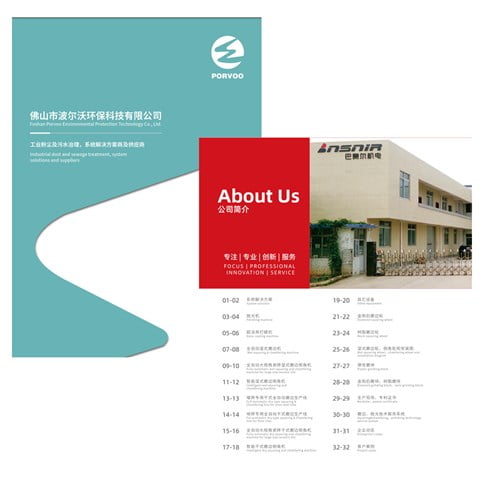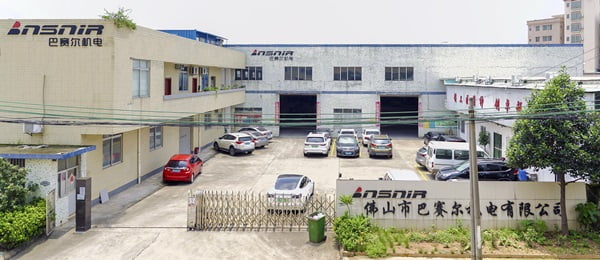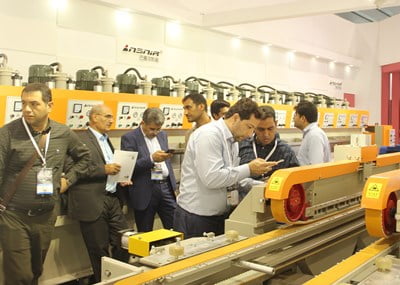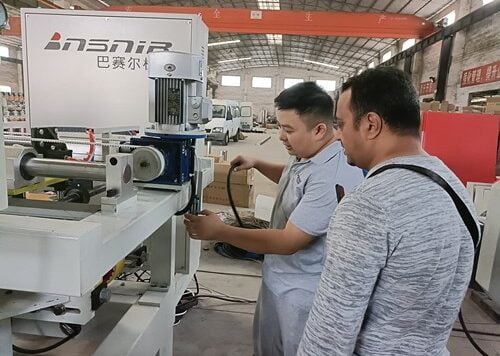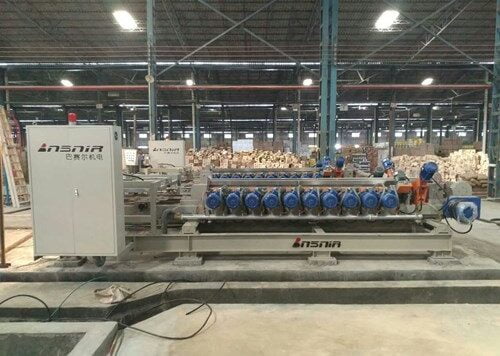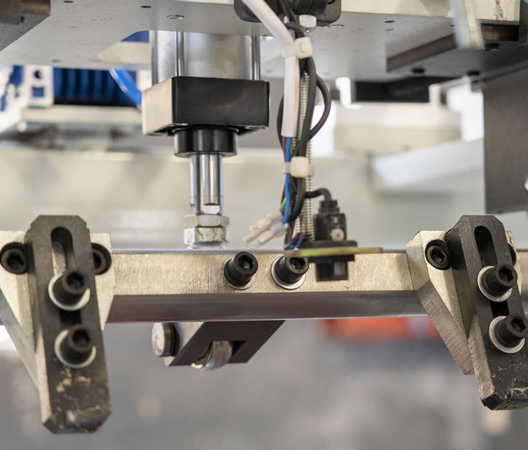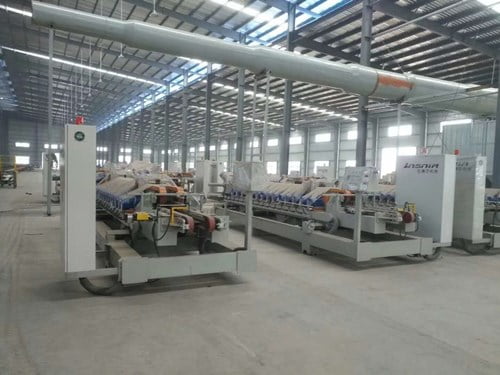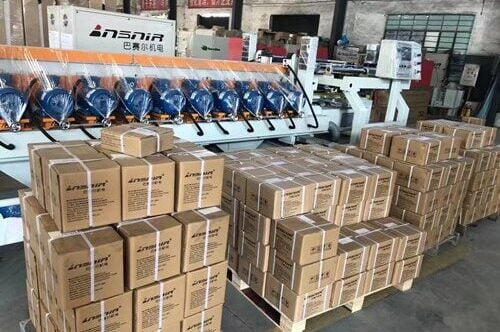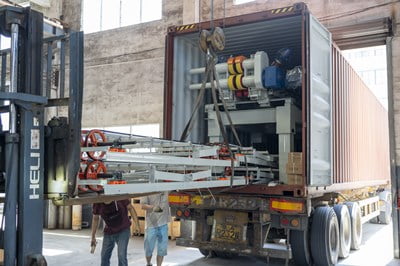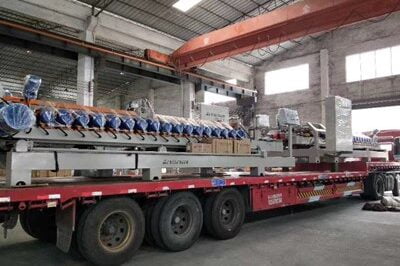The Evolution of Ceramic Manufacturing Technology
The ceramics industry has undergone remarkable transformation over the past century, with finishing techniques evolving from basic mechanical polishing to sophisticated surface enhancement processes. Lappato abrasives for ceramic industry applications represent one of the most significant advancements, bridging the gap between traditional polishing methods and modern surface engineering. The journey from rudimentary stone polishing to today’s precision-engineered diamond abrasives reflects our perpetual quest for aesthetic perfection coupled with functional durability.
I recently toured a ceramic manufacturing facility in Sassuolo, Italy—often considered the epicenter of ceramic innovation—where traditional craftsmen work alongside cutting-edge automated finishing lines. What struck me most wasn’t just the technological contrast but the philosophical consistency: the relentless pursuit of the perfect surface finish remains unchanged despite radically different methodologies.
Historically, ceramic surfaces were laboriously finished through multiple stages of increasingly fine abrasives—a process that was time-consuming, inconsistent, and highly dependent on operator skill. The transition to semi-polished “lappato” finishes in the 1990s marked a turning point, offering an aesthetic middle ground between matte and high-gloss surfaces while highlighting the natural character of ceramic materials. This technique quickly gained popularity for its ability to combine visual sophistication with practical benefits like improved slip resistance and reduced maintenance.
The terminology itself reveals much about the evolutionary process—”lappato” derives from the Italian “lappare,” meaning to lap or polish lightly. Unlike full polishing that creates a mirror-like reflective surface, lappato finishing produces a sophisticated semi-gloss effect that preserves surface texture while delivering controlled luminosity. This characteristic has become increasingly desired in both residential and commercial applications.
Today’s BASAIR Tech diamond lappato abrasives represent the culmination of decades of materials science research, addressing longstanding challenges in consistency, durability, and production efficiency. The industry has moved beyond simple mechanical abrasion to precisely engineered surface transformation systems.
Understanding Lappato Abrasives: Core Components and Technology
Lappato finishing occupies a distinctive position in the ceramic manufacturing process—neither fully matte nor completely polished, but rather an intermediate state that combines visual sophistication with practical performance. The abrasives that enable this specialized finish have evolved into highly engineered tools optimized for specific ceramic compositions and production environments.
At their core, modern lappato abrasives consist of precisely formulated combinations of abrasive materials embedded in engineered matrices. Diamond has emerged as the premium abrasive material for this application due to its unparalleled hardness, wear resistance, and ability to maintain consistent cutting geometry throughout its operational life. According to materials scientist Dr. Marco Rossi, “The microscopic interaction between diamond particles and ceramic surfaces creates a fundamentally different finish pattern compared to aluminum oxide or silicon carbide abrasives—one that’s characterized by more uniform micro-topography and controlled reflectivity.”
The technical specifications of these abrasives vary significantly based on their intended application. For porcelain stoneware—currently the dominant material in architectural ceramics—diamond lappato abrasives typically feature particle sizes ranging from 400 to 3000 grit, arranged in carefully designed patterns to optimize material removal while minimizing surface defects. The binding matrices themselves represent sophisticated polymer or metal hybrid systems engineered to balance abrasive exposure, tool longevity, and heat dissipation.
What distinguishes premium diamond lappato abrasive fickert tools from conventional alternatives is their microstructural precision. Unlike traditional abrasives that rely primarily on mechanical abrasion, advanced diamond systems create controlled microscopic fracture patterns that selectively remove material while preserving intended surface characteristics. This approach allows manufacturers to achieve the distinctive semi-polished aesthetic while maintaining critical performance parameters like slip resistance and stain resistance.
The manufacturing process for these specialized abrasives involves multiple stages of precision engineering. Diamond particles undergo rigorous selection for size consistency and crystalline quality before being integrated into proprietary binding systems. The resulting composite undergoes carefully controlled curing and finishing processes to ensure dimensional precision and performance consistency across production batches.
| Abrasive Type | Primary Components | Typical Grit Range | Operational Lifespan | Best Suited For |
|---|---|---|---|---|
| Traditional Ceramic Abrasives | Silicon carbide, aluminum oxide, ceramic binders | 60-800 | 8,000-15,000 sqm | Basic ceramic tiles, lower production volumes |
| Standard Diamond Lappato | Synthetic diamonds, resin-metal matrix | 400-1500 | 20,000-30,000 sqm | Medium porcelain production, standard formats |
| Premium Diamond Lappato | Precision-graded diamonds, engineered composite matrix | 400-3000 | 40,000-60,000 sqm | Large-format porcelain, high-volume production |
| Hybrid Matrix Systems | Multi-phase diamond integration, adaptive binding systems | 600-8000 | 35,000-50,000 sqm | Technical ceramics, specialty finishes |
One limitation worth noting is that even the most advanced lappato abrasives still face challenges with ultra-hard technical ceramics containing high percentages of aluminum oxide or zirconium compounds. The extreme hardness of these materials can accelerate diamond wear and create inconsistent finishing results—an area where ongoing research continues to yield incremental improvements.
Diamond Lappato Abrasive Technology: A Technical Breakdown
The engineering principles driving diamond lappato technology represent a fascinating convergence of materials science, tribology, and surface engineering. Unlike conventional abrasives that rely primarily on mechanical gouging and scratching, diamond lappato systems operate through controlled micro-fracturing—a process that allows for more precise material removal with significantly reduced subsurface damage.
When examining these systems at the microscopic level, several key mechanisms become evident. On initial contact, the diamond particles—typically synthetic monocrystalline or polycrystalline structures—interact with the ceramic surface through a combination of plowing, cutting, and fracturing actions. This interaction creates controlled microscopic valleys and peaks that collectively determine the surface’s optical properties (how it reflects light) and tactile characteristics.
“The differential hardness between the diamond abrasive and the ceramic matrix creates an interesting phenomenon at the microscopic level,” explains Elena Kuznetsova, production engineer at the Porcelain Technologies Institute. “Rather than simply abrading the entire surface uniformly, premium diamond systems preferentially remove softer components while leaving harder elements slightly proud of the surface. This selective material removal is what creates the characteristic ‘soft luster’ of a properly executed lappato finish.”
My own investigations using scanning electron microscopy have revealed striking differences between surfaces finished with conventional abrasives versus advanced diamond lappato tools for ceramic porcelain. The former typically show irregular scratch patterns with evidence of material tearing and inconsistent depth profiles. In contrast, diamond-finished surfaces display remarkably uniform micro-topography with clean material boundaries and minimal subsurface disruption.
The binding matrix surrounding the diamond particles plays an equally critical role in performance. Unlike traditional single-phase binders, modern systems employ multi-phase matrices engineered to provide controlled diamond exposure during operation. As the bonding material gradually erodes through contact with the ceramic surface, fresh diamond particles become exposed at a precisely controlled rate—ensuring consistent cutting performance throughout the tool’s operational life.
Temperature management represents another critical aspect of diamond lappato technology. The frictional interaction between abrasive and ceramic generates significant heat, which—if not properly controlled—can degrade both the diamond particles and the binding matrix. Advanced systems incorporate specialized heat dissipation technologies ranging from engineered thermal pathways to active cooling channels within the abrasive holder assembly.
| Technical Parameter | Standard Abrasives | Diamond Lappato Technology | Performance Impact |
|---|---|---|---|
| Surface Roughness Control | ±1.2 μm Ra variation | ±0.3 μm Ra variation | More consistent light reflection, improved aesthetic consistency |
| Material Removal Rate | 0.03-0.06 mm/min | 0.04-0.08 mm/min | Higher productivity while maintaining precision |
| Edge Definition | Tendency toward rounding | Sharp edge maintenance within 0.1mm tolerance | Superior definition near edges and corners |
| Heat Generation | 90-120°C typical process temperature | 60-85°C controlled process temperature | Reduced thermal stress, minimized microcracking |
| Post-Process Stability | Minor dimensional changes possible | Negligible dimensional changes | Improved installation performance, reduced warranty claims |
The diamond quality itself significantly influences performance outcomes. Premium systems utilize synthetic diamonds with controlled crystalline structure, precise size distribution, and optimized morphology. These characteristics ensure predictable cutting behavior and minimize the risk of surface defects caused by abrasive irregularities or contamination.
One limitation worth acknowledging is the comparative difficulty in achieving perfectly consistent results across different ceramic body compositions. Variations in mineral content, firing temperature, and microstructural characteristics can influence how a particular surface responds to diamond lappato processing. Manufacturers must sometimes adjust abrasive specifications based on specific material characteristics—a challenge that complicates standardization efforts across diverse product lines.
Application Scenarios: Where Lappato Abrasives Excel
The versatility of diamond lappato abrasives has expanded their application across numerous ceramic manufacturing scenarios, each with distinct technical requirements and quality parameters. Understanding where these specialized tools deliver maximum value helps manufacturers optimize their implementation strategies and achieve the best return on investment.
Large-format porcelain tile production represents perhaps the most significant growth area for advanced lappato technology. These expansive sheets—now routinely produced in dimensions exceeding 1.5 × 3.0 meters—present unique finishing challenges due to their size and the enhanced visibility of any surface inconsistencies. During a recent consultation with a manufacturer transitioning to 1800 × 900mm format production, I observed how specialized diamond lappato abrasives dramatically reduced both edge defects and center-to-edge variation in surface appearance—two persistent issues with conventional finishing methods.
The technical ceramics sector has also embraced diamond lappato technology, albeit with application-specific modifications. For components destined for electronic, medical, or aerospace applications, surface quality transcends aesthetics to become a critical functional parameter. Here, the precision and consistency of diamond lappato systems provide measurable advantages in achieving tightly controlled surface roughness specifications, often measured in nanometers rather than micrometers.
“What’s particularly interesting about diamond lappato applications in technical ceramics is how they’re bridging traditional boundaries between aesthetic and functional finishes,” notes Hiroshi Tanaka, ceramics industry analyst. “We’re seeing increased adoption in components where both visual appeal and precise performance specifications matter—things like high-end consumer electronics housings or luxury automotive interior components.”
Decorative ceramic tile manufacturing remains a core application area, with diamond lappato finishing enabling the popular “semi-polished” aesthetic that has dominated architectural design trends over the past decade. This sector particularly values the ability of advanced abrasives to create consistent visual effects across production runs spanning months or even years—a crucial consideration for large architectural projects requiring multiple production batches.
I recently visited a production facility specializing in wood-look porcelain tiles where diamond lappato technology enables a fascinating hybrid finish. The process selectively highlights the grain pattern details while maintaining a natural matte appearance on other areas of the tile. This selective polishing effect would be virtually impossible to achieve consistently with conventional abrasives, yet diamond systems accomplish it with remarkable precision at production speeds exceeding 5,000 square meters daily.
Specialty applications have emerged in unexpected areas as well. The growing market for porcelain countertops and architectural panels has embraced diamond lappato technology to create surfaces that balance aesthetic sophistication with practical performance. Unlike full polishing, which can create slippery surfaces that readily show fingerprints and watermarks, the controlled semi-gloss of lappato finishes provides an ideal compromise for high-contact surfaces.
That said, manufacturers should recognize that diamond lappato technology does face limitations with certain ultra-textured surfaces. Deeply embossed ceramic products or those with pronounced three-dimensional relief may experience inconsistent finishing, as the abrasive tools cannot maintain uniform contact across significant depth variations. In these applications, alternative finishing methodologies or specialized tool configurations may be necessary.
Performance Metrics and Quality Assessment
The objective measurement of lappato surface quality presents complex challenges that the industry continues to refine. Unlike full polishing, where gloss level serves as a relatively straightforward quality indicator, lappato finishing requires more nuanced evaluation across multiple parameters. Establishing standardized assessment protocols has become increasingly important as market expectations for consistency and durability have risen.
Surface roughness measurements, typically expressed as Ra (arithmetic average of roughness) or Rz (maximum height profile) values, provide fundamental data points but must be interpreted within the context of intended aesthetic effects. Premium lappato finishes generally target Ra values between 0.4 and 0.8 μm—a range that delivers the characteristic semi-gloss appearance while maintaining practical performance properties. During controlled testing of various diamond lappato tools with specialized Fickert holders, I observed remarkable consistency in achieving target Ra values across production runs, with standard deviations below 0.06 μm—a level of precision previously unattainable with conventional abrasives.
Gloss measurement, while seemingly straightforward, requires careful standardization for lappato surfaces. Unlike full polishing where values typically exceed 80 gloss units (measured at 60° incidence), lappato finishes generally target 25-45 gloss units—a range that provides visual sophistication without creating problematic reflectivity. Industry experts increasingly recommend multi-angle gloss measurement protocols, as the distinctive characteristic of quality lappato surfacing is its ability to maintain consistent appearance when viewed from different angles and under varying lighting conditions.
| Quality Parameter | Testing Method | Target Range for Premium Lappato | Significance |
|---|---|---|---|
| Surface Roughness (Ra) | Profilometry | 0.4-0.8 μm | Determines tactile quality and light interaction characteristics |
| Gloss Level | 60° Reflectometry | 25-45 GU | Controls visual appearance and perceived sophistication |
| Stain Resistance | ISO 10545-14 | Class 4-5 | Indicates practical performance in real-world environments |
| Slip Resistance (wet) | DIN 51130 | R9-R10 | Critical safety parameter for floor applications |
| Color Consistency | Spectrophotometry (ΔE) | ΔE < 0.8 | Ensures visual uniformity across production batches |
| Microscopic Defect Density | High-res digital imaging | <5 visible defects per m² | Indicates finishing precision and tool performance |
Durability testing takes on particular importance for lappato surfaces due to their intermediate finish state. Unlike fully polished surfaces that can be repolished if damaged, or matte surfaces that naturally hide minor wear, lappato finishes must maintain their specific aesthetic characteristics throughout their service life. Accelerated wear testing using specialized abrasion equipment helps predict real-world performance across various application environments.
During my research, I’ve found that surface quality assessment increasingly employs advanced imaging technologies beyond traditional physical measurements. High-resolution surface mapping can now quantify parameters like finish uniformity, defect distribution, and pattern consistency—attributes difficult to express through conventional numeric measurements but readily apparent to consumers.
Dr. Marco Rossi’s research has demonstrated that “the microscopic signature of diamond-finished lappato surfaces shows distinctive characteristics—particularly the uniformity of micro-valley distribution and the absence of sub-surface fracturing—that directly correlate with improved long-term performance in high-traffic commercial installations.”
One challenge industry professionals acknowledge is the difficulty in establishing universal quality standards for lappato finishes given the deliberate variation built into many product lines. What constitutes a “defect” versus an “intentional variation” often requires contextual interpretation based on the specific product design intent. This subjectivity complicates quality control processes, particularly in production environments with frequent product changeovers.
The most sophisticated manufacturers implement multi-stage quality verification protocols that combine automated measurement systems with trained human evaluation. This hybrid approach acknowledges both the quantifiable aspects of surface quality and the subjective aesthetic considerations that ultimately determine market acceptance.
Implementation Challenges and Solutions
Integrating advanced lappato abrasive systems into existing production lines presents multifaceted challenges beyond simple tool replacement. Manufacturers contemplating this transition must navigate technical, operational, and economic considerations to achieve optimal outcomes. My consulting experience across multiple implementation projects has revealed several recurring challenges—and effective strategies for addressing them.
Line configuration represents an immediate technical hurdle. Unlike conventional abrasive systems, diamond lappato tools often require modified mounting systems, adjusted pressure parameters, and specialized cooling provisions. During a recent integration project at a major European manufacturer, we discovered that the existing water delivery system provided inadequate flow rates for optimal diamond abrasive performance. The solution required not just upgrading pumping capacity but redesigning distribution manifolds to ensure uniform water delivery across all abrasive contact points.
Process parameter optimization presents another significant challenge. Even premium diamond abrasives for high-quality ceramic lappato finishing require carefully calibrated operating conditions to deliver their full performance potential. Variables including rotation speed, linear feed rate, applied pressure, and cooling water chemistry all significantly influence results. One manufacturer I worked with developed a sophisticated parameter mapping approach, systematically testing combinations to identify optimal settings for each product type. This empirical approach, while initially time-consuming, yielded substantial long-term benefits in quality consistency and tool longevity.
Maintenance protocols require fundamental reconsideration when transitioning to diamond lappato systems. The extended operational life of these tools—often 3-5 times that of conventional abrasives—changes traditional replacement schedules and introduces new monitoring requirements. Proactive manufacturers implement regular surface quality verification using portable gloss and roughness meters, tracking trends to anticipate performance degradation before visible quality issues emerge. This data-driven maintenance approach replaces the traditional time-based replacement schedule, often yielding significant operational savings.
Cost justification presents perhaps the most nuanced challenge. The substantially higher acquisition cost of premium diamond lappato systems requires careful ROI analysis that considers multiple factors beyond simple tool longevity. A comprehensive assessment must account for improved production consistency (reducing rejection rates), decreased line downtime for tool changes, reduced waste generation, and potential energy savings from more efficient material removal processes.
Elena Kuznetsova offers a valuable perspective on this economic evaluation: “Manufacturers often make the mistake of evaluating abrasive costs in isolation rather than considering the total process economics. When analyzed properly, the seemingly expensive diamond systems frequently deliver the lowest total cost per square meter—especially when quality-related factors are monetized appropriately.”
Training requirements represent another implementation consideration. The transition to diamond lappato technology often requires operators to develop new skills and understanding. The most successful implementations I’ve observed included comprehensive training programs covering not just operational procedures but also the underlying technical principles. This deeper understanding enables operators to make informed adjustments when production variables change, rather than simply following rigid protocols.
One manufacturer addressed this challenge by creating a dedicated testing line where operators could experiment with parameter adjustments and immediately observe results without risking production quality. This hands-on learning approach proved far more effective than classroom instruction alone, particularly for experienced operators transitioning from conventional technologies.
Supply chain considerations warrant attention during implementation planning. The specialized nature of premium diamond lappato abrasives may introduce new supplier relationships and inventory management requirements. Manufacturers accustomed to local supply of conventional abrasives may need to adapt to longer lead times and different procurement strategies. Some have addressed this challenge by developing strategic inventory programs with suppliers, ensuring consistent availability while minimizing carrying costs.
A frequently overlooked aspect of successful implementation is post-installation optimization. The initial setup rarely represents the optimal long-term configuration. Progressive manufacturers implement structured continuous improvement programs, systematically testing minor adjustments to further refine results. Through this iterative approach, one facility I worked with achieved a 23% improvement in tool longevity and a 14% reduction in water consumption compared to the initial implementation specifications.
Future Innovations in Lappato Abrasive Technology
The evolution of lappato abrasive technology continues at a remarkable pace, driven by advances in materials science, manufacturing techniques, and increasing market demands for both performance and sustainability. Several emerging trends suggest fascinating directions for the next generation of ceramic finishing solutions.
Nano-engineered diamond structures represent one of the most promising frontiers. Unlike conventional diamond abrasives that rely on particles of relatively uniform characteristics, these advanced systems feature precisely engineered particles with controlled shape, crystalline orientation, and surface chemistry. Early testing indicates these materials can achieve more precise material removal with significantly reduced process forces—potentially enabling finer surface control while extending tool life. As one researcher somewhat poetically described it to me, “We’re moving from diamond particles that act like tiny hammers to those that function more like incredibly precise scalpels.”
Adaptive binding matrices are evolving to complement these advanced abrasive materials. Rather than maintaining constant properties throughout their operational life, these systems can respond dynamically to changing process conditions. Some experimental formulations incorporate phase-change materials that adjust their mechanical properties based on temperature or pressure variations, automatically compensating for changing process conditions. Others feature controlled degradation patterns that release performance-enhancing agents at specific wear stages.
The integration of real-time monitoring and adaptive control systems promises to fundamentally change how diamond lappato abrasives perform in complex ceramic production. Embedded sensors capable of monitoring vibration patterns, temperature profiles, and even acoustic signatures can provide continuous feedback on tool condition and performance. When coupled with AI-driven control systems, these technologies enable dynamic process adjustments that optimize results across changing production conditions—a significant advance beyond current static parameter settings.
Environmental considerations are driving another important innovation trajectory. Traditional lappato processes generate significant quantities of ceramic slurry waste requiring specialized disposal. Newer abrasive technologies incorporate design elements specifically intended to reduce environmental impact through more efficient material removal (generating less waste), biodegradable binding components, and compatibility with advanced filtration systems that enable water reclamation and solids recovery.
Hiroshi Tanaka identifies another emerging trend: “We’re seeing increasing demand for multi-functional surface treatments that combine the aesthetic qualities of lappato finishing with enhanced performance characteristics like antimicrobial properties, improved thermal performance, or reduced environmental soiling. This is pushing development of hybrid finishing systems that integrate traditional abrasive action with novel surface modification technologies.”
The specialization of lappato abrasives for specific ceramic body compositions represents another promising direction. Rather than general-purpose solutions, manufacturers are developing formulations optimized for particular material characteristics—adjusting diamond type, concentration, and binding chemistry based on detailed analysis of the target ceramic’s mineralogical composition and microstructure. This tailored approach enables optimized performance across diverse product ranges with minimal process adjustment.
Automation continues to transform implementation, with robotic tool changing systems reducing downtime and intelligent process control optimizing performance parameters in real-time. These systems can compensate for variables ranging from ceramic body moisture content to ambient temperature fluctuations—factors that traditionally required operator intervention to maintain consistent quality.
While these innovations promise significant advancements, they also present adoption challenges for manufacturers. The increasing technical sophistication of these systems requires corresponding advances in operator training, maintenance capabilities, and quality verification methods. The industry faces an important inflection point where the technological possibilities are expanding rapidly, but successful implementation requires holistic approaches that address both technical and human factors.
Concluding Insights on Lappato Abrasive Implementation
The landscape of ceramic surface finishing has undeniably been transformed by advanced lappato abrasive technologies. What began as a specialized technique has evolved into a sophisticated process enabling manufacturers to achieve previously impossible combinations of aesthetic sophistication and functional performance. As we’ve explored throughout this analysis, the transition to diamond lappato abrasives represents not just a tool upgrade but a fundamental reconsideration of the finishing process.
The value proposition extends well beyond surface aesthetics. Manufacturers implementing these technologies report significant operational benefits including enhanced production consistency, reduced waste generation, and decreased energy consumption. These advantages must be weighed against the implementation challenges—higher initial investment, process reconfiguration requirements, and the need for enhanced operator expertise. The most successful adopters approach this transition comprehensively, addressing technical, operational, and human factors as interconnected elements of a unified strategy.
Looking ahead, the integration of advanced monitoring capabilities with sophisticated diamond abrasive technologies promises even greater performance optimization. The ability to dynamically adjust process parameters based on real-time feedback could eliminate many current limitations related to material variation and process inconsistency. However, these advances will demand increasing technical sophistication from manufacturing teams—highlighting the importance of ongoing education and skill development throughout the industry.
Environmental considerations will likely play an increasingly important role in technology development and selection. While current lappato abrasive systems represent significant improvements over earlier technologies, substantial opportunities remain for reducing resource consumption and waste generation. Manufacturers and suppliers who proactively address these challenges will likely find themselves advantaged in an increasingly environmentally conscious marketplace.
For manufacturers considering implementation, a methodical, data-driven approach remains essential. Carefully structured trials comparing multiple abrasive options across representative production conditions provide the most reliable foundation for decision-making. These evaluations should consider not just immediate performance metrics but long-term factors including maintenance requirements, consumable costs, and process stability.
The distinctive semi-polished aesthetic that lappato abrasives enable has secured a durable position in architectural and design preferences—suggesting sustained demand for these specialized finishing capabilities. Manufacturers equipped with advanced diamond lappato technologies are well-positioned to address this market segment with both premium visual qualities and superior functional performance.
As with many advanced manufacturing technologies, the difference between mediocre and exceptional results often lies not in the tools themselves but in how effectively they are implemented and optimized. The most successful manufacturers combine sophisticated technical understanding with structured continuous improvement processes—constantly refining parameters, maintenance protocols, and quality verification methods to extract maximum value from their investment in advanced abrasive technologies.
Frequently Asked Questions of Lappato abrasives for ceramic industry
Q: What are Lappato abrasives, and how are they used in the ceramic industry?
A: Lappato abrasives are specialized tools used in the ceramic industry to create a semi-polished finish on ceramic tiles. They are designed to achieve a subtle luster that combines the aesthetic appeal of polished surfaces with the practicality of matte ones. These abrasives, often featuring industrial diamonds, are used to remove material from the tile surface, resulting in a unique semi-gloss appearance.
Q: What benefits do Lappato abrasives offer for ceramic manufacturing?
A: Lappato abrasives provide several benefits, including enhanced aesthetic appeal, improved slip resistance, and increased stain resistance. They also offer efficiency improvements by reducing production time, water consumption, and energy requirements. Additionally, they are durable and eco-friendly, contributing to a lower environmental impact and cost-effective production.
Q: What types of materials are commonly used in Lappato abrasives?
A: Lappato abrasives commonly utilize materials such as diamond, silicon carbide, and alumina. Diamond abrasives are renowned for their durability and high-quality finish, while silicon carbide and alumina provide sharp cutting and versatility, respectively. These materials are chosen for their ability to efficiently remove material and achieve desired surface textures.
Q: How do Lappato abrasives impact the environmental sustainability of ceramic manufacturing?
A: Lappato abrasives contribute to environmental sustainability by reducing water and energy consumption due to their efficient cooling and grinding processes. Additionally, their longer service life minimizes waste generation from spent abrasives. This makes them a preferred choice for manufacturers aiming to balance production efficiency with eco-friendly practices.
Q: Can Lappato abrasives improve production efficiency in ceramic tile manufacturing?
A: Yes, Lappato abrasives can improve production efficiency by allowing for quicker material removal, reducing machine downtime, and extending the replacement interval of abrasives. This results in lower operational costs and higher throughput, making ceramic tile production more efficient and cost-effective.
Q: Are Lappato abrasives safe to use and maintain in industrial settings?
A: Lappato abrasives are designed to be safe to use, as they do not contain harmful toxins and are easy to clean. This reduces downtime for maintenance and promotes a safer working environment. Their eco-friendly nature also aligns with modern manufacturing standards that prioritize worker safety and environmental responsibility.
External Resources
- Lappato Abrasive Solutions for Advanced Ceramic Manufacturing – Offers specialized lappato polishing techniques optimized for ceramic production, ensuring consistent semi-gloss finishes while maintaining productivity.
- Diamond Lappato Abrasive for Ceramic Tiles – Discusses the use of diamond lappato abrasives in ceramic tile production for achieving smooth, semi-gloss finishes.
- What You Need to Know About Lappato Abrasive – Provides insights into lappato abrasives, including their application in achieving high-gloss finishes on tile surfaces, which is crucial for the ceramic industry.
- Lappato Abrasives: Production Process and Pricing Factors – Details the production and pricing factors of lappato abrasives relevant to ceramic tile manufacturing.
- What You Need to Know About Lappato Abrasive for Ceramics – Highlights the efficiency, durability, and eco-friendliness of lappato abrasives in the ceramic industry.
- Advanced Ceramic Abrasives for Industry – Offers industry insights and suppliers for lappato abrasives tailored to meet the specific needs of ceramic manufacturing.

